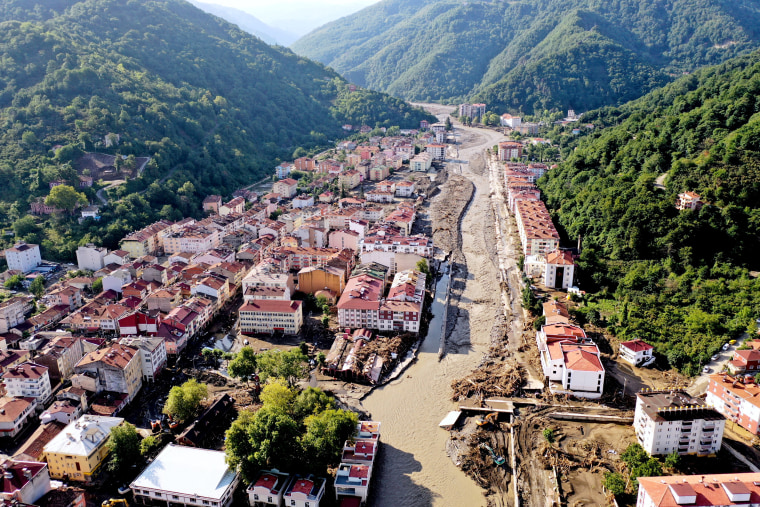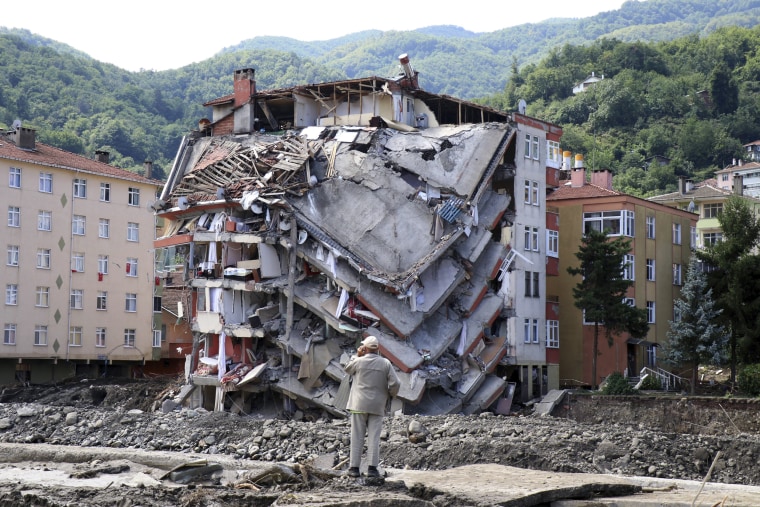The death toll from severe floods and mudslides in coastal Turkey has climbed to at least 44, the country's emergency and disaster agency said Saturday.
Torrential rains that pounded the Black Sea provinces of Bartin, Kastamonu and Sinop on Wednesday caused flooding that demolished homes, severed at least five bridges, swept away cars and rendered numerous roads unpassable. Turkish disaster agency AFAD said 36 people were killed in Kastamonu, seven in Sinop and one in Bartin.
Nine people remained hospitalized in Sinop, according to the agency. Some residents in Kastamonu said on social media that there are hundreds more missing, a statement also made by an opposition lawmaker. But the provincial governor's office said late Friday that reports about 250 unidentified bodies were untrue.

Rescue teams and sniffer dogs continued the painstaking task of trying to locate residents. AFAD said 5,820 personnel, 20 rescue dogs, 20 helicopters and two search planes were at the disaster spots.
About 2,250 people were evacuated across the region before, during and after the floods, some lifted from rooftops by helicopters. Many were being temporarily housed in student dormitories, authorities said.
Climate scientists unequivocally say that climate change is leading to extreme weather events as the world warms because of the burning of coal, oil and natural gas. Such calamities are expected to happen more frequently as the planet warms.
Download the NBC News app for breaking news and politics
Experts in Turkey, however, say interference with rivers and improper construction also were contributors to the massive damage in Turkey’s floods.
Geologists have said that construction narrowed the river bed and the surrounding alluvial flood plain of the Ezine stream in Kastamonu’s Bozkurt district, where the damage was most severe, from 400 meters (1,312 feet) to 15 meters (49 feet). Residential buildings were built along the waterfront.
During severe rains, the contracted stream has limited area in which to move and can overflow. Videos posted by residents showed water rushing downstream in Bozkurt as the surrounding buildings and roads flooded.
One geologist, Ramazan Demirtas, explained the river bed narrowing on Twitter and said that humans were to blame for this week's disaster.
In Sinop, floodwaters almost completely wiped out the village of Babacay, leaving toppled homes, damaged bridges and rubble in their wake. A five-story apartment building constructed on a river bed was destroyed.
The floods struck on the heels of wildfires in southern Turkey that devastated forestlands in the seaside provinces of Mugla and Antalya, which are popular with tourists. At least eight people died and thousands of residents were forced to flee.
